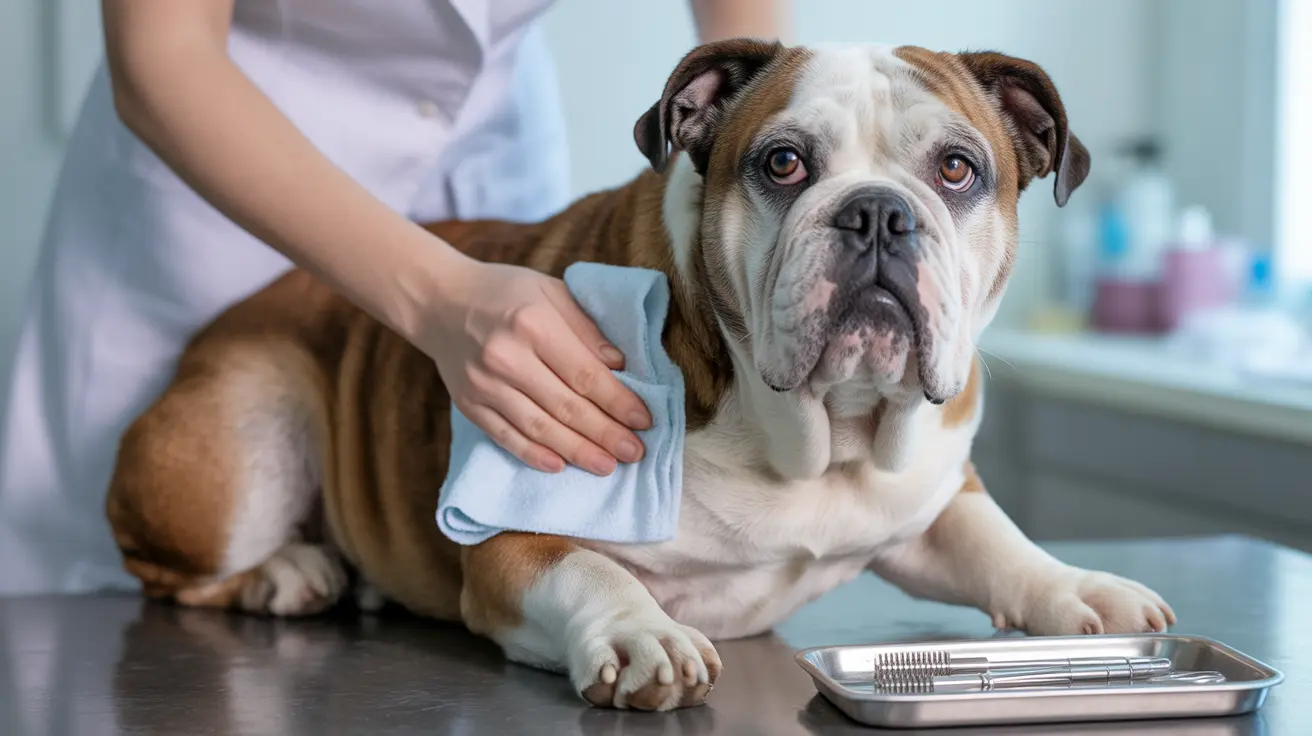Understanding Paraphimosis in Dogs
Paraphimosis occurs when a dog's penis cannot retract back into its protective sheath (prepuce). While brief exposure during urination or excitement is normal, prolonged exposure lasting more than 20-30 minutes signals a medical emergency requiring immediate attention.
This condition differs from normal anatomical function and can result in severe complications if left untreated, including tissue death, permanent damage, or even the need for surgical intervention.
Common Causes and Risk Factors
Several factors can contribute to paraphimosis in dogs:
- Hair or debris becoming wrapped around the penis
- Trauma from mating or injury
- Excessive licking leading to swelling
- Congenital abnormalities
- Neurological conditions
- Foreign objects trapped in the prepuce
Recognizing the Warning Signs
Early identification of paraphimosis is crucial for successful treatment. Watch for these symptoms:
- Visible penis exposure lasting longer than 20 minutes
- Swelling or discoloration of the exposed tissue
- Excessive licking of the genital area
- Signs of discomfort or distress
- Difficulty urinating
- Dried or damaged tissue appearance
Immediate First Aid Steps
If you notice your dog's penis stuck out, take these initial steps:
- Clean the area gently with lukewarm water
- Apply a water-based, pet-safe lubricant
- Check for any visible foreign material or hair
- Monitor your dog's comfort level and behavior
- Contact your veterinarian for guidance
Professional Veterinary Treatment
Veterinary intervention may include:
- Professional cleaning and lubrication
- Administration of anti-inflammatory medications
- Sedation if necessary for treatment
- Manual reduction of the exposed tissue
- Surgical intervention in severe cases
- Follow-up care and monitoring
Prevention Strategies
To help prevent paraphimosis:
- Maintain regular grooming around the genital area
- Watch for excessive licking behavior
- Keep the area clean and free from debris
- Schedule regular veterinary check-ups
- Address any underlying health conditions promptly
Frequently Asked Questions
What causes the tip of my dog's penis (lipstick) to get stuck out and not retract?
The most common causes include hair or debris entrapment, swelling from trauma or excessive licking, anatomical abnormalities, and neurological conditions affecting normal retraction.
How can I tell if my dog has paraphimosis and what are the warning signs?
Key warning signs include penis exposure lasting longer than 20-30 minutes, swelling, discoloration, excessive licking, signs of pain or distress, and difficulty urinating.
What immediate first aid steps should I take if my dog's penis is stuck out?
Clean the area with lukewarm water, apply pet-safe lubricant, check for foreign material or hair, and contact your veterinarian immediately for guidance.
When should I seek veterinary care for my dog's stuck-out penis, and what treatments are available?
Seek veterinary care immediately if the condition persists beyond 30 minutes or if your dog shows signs of pain or distress. Available treatments include manual reduction, medication, and surgery in severe cases.
How can I prevent paraphimosis from happening to my male dog in the future?
Maintain regular grooming, keep the genital area clean, monitor for excessive licking, and address any underlying health issues promptly. Regular veterinary check-ups can help identify and prevent potential problems.
Conclusion
While a dog's exposed penis can be concerning, understanding the signs of paraphimosis and knowing how to respond can help prevent serious complications. Always err on the side of caution and seek veterinary care when in doubt, as early intervention offers the best prognosis for your pet's health and recovery.






